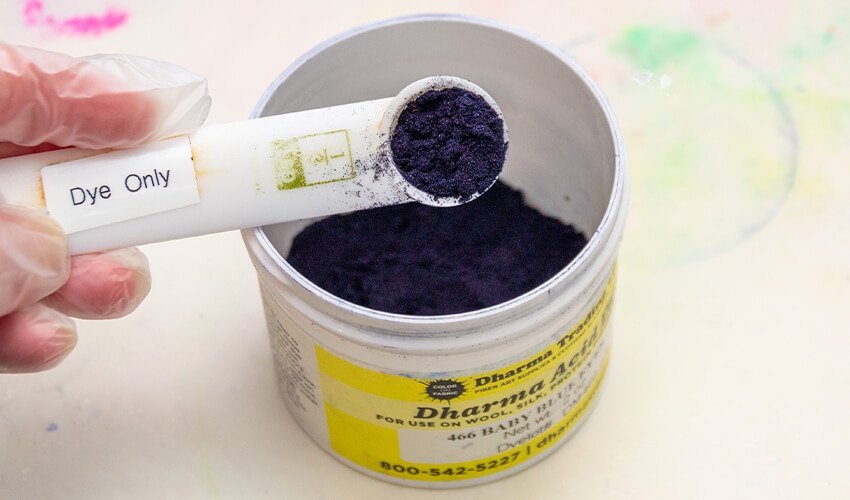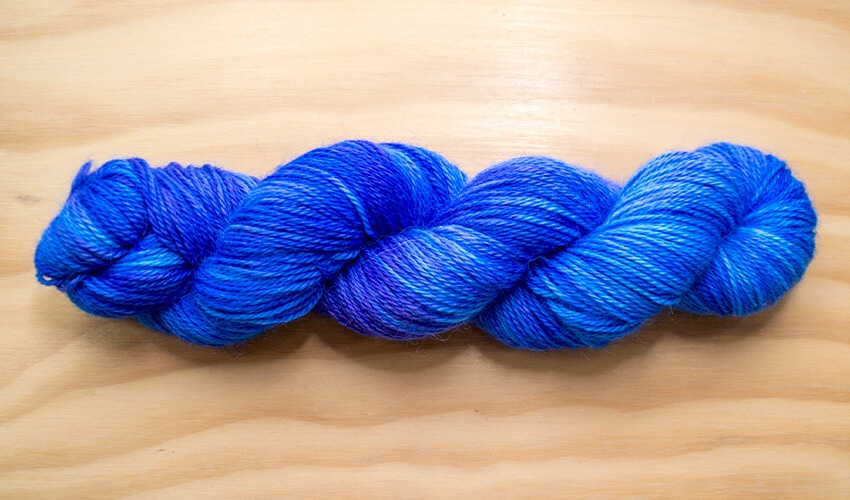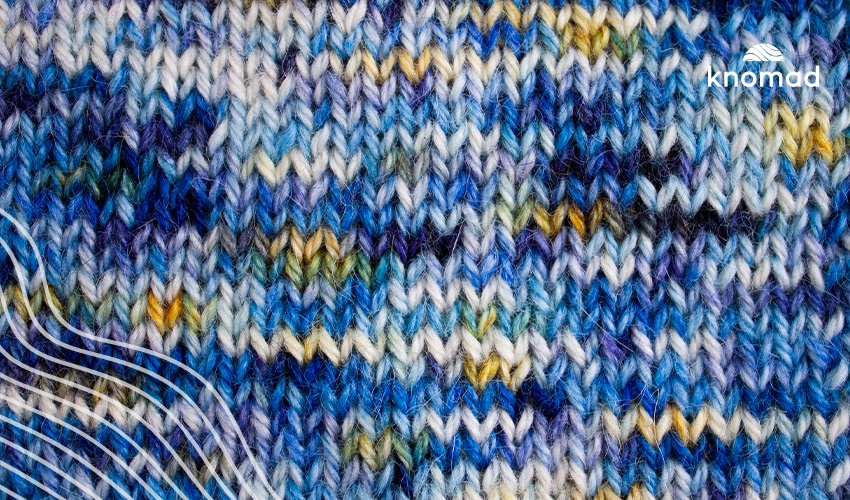Transform LATTE with Over Dyeing
There are times in dyeing and experimentation that a skein just doesn’t turn out quite how you anticipated. This is always disappointing, however, it is also a great opportunity to play with over dyeing a skein of yarn! Over dyeing is when you dye on top of something that has already been dyed once. This is great for projects that have a medium to light first dye color so the final color is not too dark. When choosing a color for over dyeing, be sure to use the color wheel to plan so you know how the two colors will layer and blend. You can easily shift a yellow skein to green with blue over dye or a blue skein to teal with a green over dye. Complementary colors, like orange and blue, sit opposite each other on the color wheel and when combined will turn a muddy shade of brown.
Today we are going to be over dyeing on a skein of LATTE that I dyed purple a while ago. This skein was a nice shade of purple, but I could never seem to find the right project for it. This made it the perfect candidate for this project! This skein had some pockets of bare yarn peeking through that I knew would take up a new color beautifully as well. I decided to transform this variegated purple skein into a beautiful tonal blue! Purple and blue are analogous colors, meaning they sit next to each other on the color wheel, and will blend nicely together.
SUPPLIES
1 skein LATTE already dyed a medium, variegated purple
Dharma Acid Dye in BABY BLUE EYES
Large bowl
Water
Dye pot with a lid and heat source (I use a slow cooker)
Tongs
Zip tie
Citric acid
Gloves
Respirator
Spoon or fork for mixing
Measuring spoons in ⅓ TSP
*all supplies used to acid dye are no longer food safe and should be separated from your regular kitchen supplies
PRESOAK
Fill your large bowl with cool water. Loop a zip tie through your skein of LATTE. This is optional, but it makes it easier to maneuver your skein while it is in the dye pot. Submerge your skein in the cool water and allow it to presoak and fully absorb the water.
The yarn should darken in color and be an even color throughout that is about 1-2 shades darker than it was when it was dry. A thorough presoak allows the yarn to swell; this opens the protective cuticle layer of the protein fibre so that the dye can be deposited underneath and bind to the fibre. Because of this, it is important to allow the yarn time to fully soak for even dyeing results. This process typically takes about an hour or two.
PREP THE DYE
Fill your dye pot about two thirds of the way with cool water. While wearing your respirator and gloves, dissolve ⅓ TSP of BABY BLUE EYES and 1-2 tablespoons of citric acid into the dye pot. Acid dye is a lung irritant while in powder form and can take some time to dissolve fully, so make sure to wear your respiratory protection until the dye is fully dissolved.
ADD THE YARN
Wear gloves for this step. Once the yarn has presoaked fully and your dye bath is prepared, it is time to add the yarn! Gently squeeze out the excess water from the yarn and move the skein into the dye bath. Once the skein is in the dye bath, I like to use my tongs to fluff the skein a little so that the water can flow fully and evenly around the skein to ensure even absorption of the dye. Put the lid on the dye bath.
ADD HEAT
If you are using a slow cooker, set the heat to high. If you are on a stove top, medium to medium high is usually a good setting. The key is to avoid simmering or boiling your yarn so as to avoid felting from the agitation of the bubbles. Keeping the dye bath hot but right below simmering is the perfect balance: under ~185*F or ~85*C. Allow your yarn to set by keeping it at this temperature for at least 30 minutes.
The dye bath will exhaust when the yarn has absorbed all available pigment. You can tell this has happened with the water around the yarn is clear. I like to use a white measuring spoon to check if the dye bath water is clear. Once this happens, turn off the heat and remove the lid.
COOL, RINSE, & DRY
Allow the yarn to cool fully before rinsing it out and drying it. I typically allow my yarn to cool overnight and then rinse it first thing in the morning. Cooling completely takes several hours, so make sure your yarn is in a place where it will be undisturbed for an extended period of time. Once it has cooled fully, rinse it under cool, running water. Squeeze out the excess water and rinse it a few times more ensuring the water runs clear before moving on. Hang up your yarn somewhere with good air circulation to dry, and then it will be ready to enjoy!
THE FINISHED YARN
I really enjoyed the variation of the blue on the final yarn. The sections where the purple was deeper on the base have shifted to a rich shade of blue. There are hints of the purple still visible that blend so well with the blue, I think the flow of the color shifts will knit up beautifully!
Have you over dyed your yarn? Let us know how it went in the comments! Use the hashtag #knomad_yarn to share your work with us on social media. We can’t wait to see what you make!
















